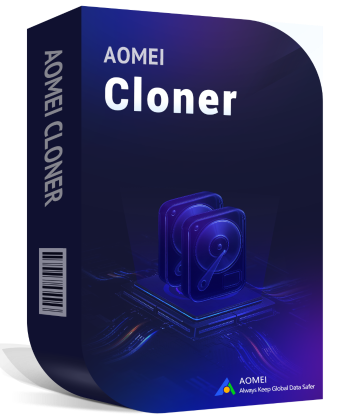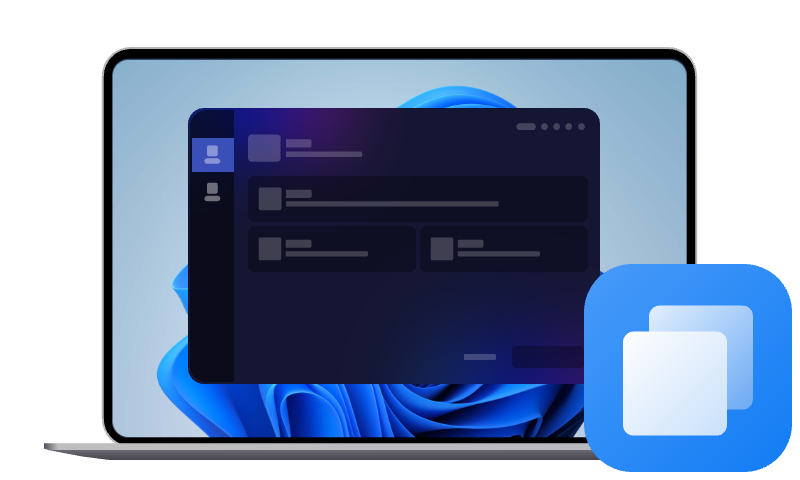[SOLVED] Clonezilla Destination Disk Is Too Small | 2 Methods
In this article, you’ll get why you receive “Clonezilla destination disk is too small” error while cloning or restoring image file and how to fix it step by step in 2 simple and efficient methods.
Clonezilla is a free, open-source disk cloning and imaging tool designed for system deployment, backup, and recovery. It supports cloning disks and partitions, bare-metal recovery, command-line and live-CD mode, etc. However, some users report the error “Clonezilla destination disk is too small” while cloning or restoring an image file.
“I'm trying to clone the Source disk(256GB SSD)to the Target disk(250GB SSD), but the error message of Target Disk is Too Small is presented and CL shuts down. I don't want to purchase additional disks to match the size of the Source disk.
All I'm trying to accomplish is get a fully functional disk copy so that in the event of a crash, I can simply swap disks and be operational again... quickly.Any ideas? Thank you”
- Question from Reddit
The Error: Clonezilla Destination Disk Is Too Small
Clonezilla copies allocated sectors, not “free” space, thus requiring the destination drive to be the same size or larger than the source drive. Note this is not the size of the disk, but the sum of the partition sizes. If not, you'll receive the error "Clonezilla destination disk is too small" unless you shrink the partition size of source disk before cloning or restoring the imaging file with Clonezilla.
You need to create a bootable USB with GParted to resize partition in the live environment, or shrink the volume using Disk Management within Windows. Then, start Clonezilla Windows 11 and clone larger drive to smaller drive in Export mode. Be sure to enable the “-icds” option to skip checking destination disk size.
Or, you can directly clone hard drive with different sizes using a dedicated cloning software.
Fix the Clonezilla Target Disk Is Too Small Error
As mentioned above, you can choose to shirnk the partition size of the source disk and then clone Windows 11 to SSD using Clonezilla with Export mode and -icds option. This is also available for restoring an image file to smaller drive.
Part 1: Shrink Partition Size of the Source Disk
Clonezilla won’t clone to smaller drive unless the source disk is equal to or smaller than the target disk. This can be done in the GParted live environment or Windows.
Option 1: Create a Bootable USB using GParted
Step 1. Download GParted ISO and create a bootable USB to boot from it.
Step 2. Select the partition on the source disk and select "Resize/Move". Be sure the source disk is smaller than the target disk.
Step 3. Reboot the source disk and let Windows complete CHKDSK.
Option 2: Shrink Volume using Disk Management (within Windows)
Step 1. Press the Win + X keys and select Disk Management to access it. Then, locate and right-click the source disk partition and select Shrink Volume.
Step 2. Enter disk space to shrink in MB and click on Shrink to confirm it. Repeat these steps if there are multiple partitions.
Step 3 (Optional). Open CMD as administrator and type chkdsk X: /f /r to check and repair disk errors. The /r parameter marks bad sectors as unusable. Replace X: with the drive letter of your disk.
Part 2: Clone Larger Drive to Smaller Drive using Clonezilla
Step 1. Download Clonezilla ISO and create a bootable USB using tools like Rufus. Then, boot from it.
Step 2. After loading, select Clonezilla version -Other modes of Clonezilla live > Clonezilla live (To RAM…)>language and keyboard layout, and click Start Clonezilla.
Step 3. Select device-device mode.
Step 4. Select Expert Mode. Be sure the advanced parameter -icds is checked.
Step 5. Select disk_to_local_disk. Then, select the source disk and destination disk.
Step 6. Then, select the source disk and destination disk. Configure other options and type in y to continue the cloning process.
Part 3: Restore Image File to Smaller Drive using Clonezilla
Step 1. Start Clonezilla as usual. Then, select device-image > local_dev to mount the image file. Note that if there are multiple partitions, you must press the Space key to select them.
Step 2. Clonezilla will start to scan all available disks. Once found the destination disk, press Ctrl + C to quit the scanning report and then select it as the image repository > Restoredisk option.
Step 3. Configure other options until you are asked to choose the Clonezilla mode. Select Export mode and be sure the -icds option is enabled.
⚠️Note that the partition name is the device name in GNU/Linux. The first partition in the first disk is "sda1", the 2nd partition in the first disk is "sda2", the first partition in the second disk is "sdb1" or "sdb1"... If the system you want to save is MS windows, normally C: is sda1, and D: could be sda2, or sda5...
Step 4. Select the restoredisk option again. Then, select the image file to restore from and the destination disk to save it.
Step 5. Select -k0 Use the partition table from the image, check the image before restoring, and configure other options.
Step 6. Once done, let Clonezilla check the image and restore to a smaller drive. You’ll be asked to confirm twice before restoring the disk image.
Use Dedicated Cloning Software as an Alternative 🚀
Speaking of the best alternative to Clonezilla, it’s essential to learn more about disk imaging vs cloning, both are methods to transfer data from one hard drive to another, but with different best uses.
In a simple word, disk cloning is best for system migration and quick upgrade, while disk backups and restore are used for ongoing data protection. AOMEI Cloner is a dedicated cloning software for Windows and can deal with different cloning scenarios well, even for smaller drives.

- Easy to use and no technical skills required.
- Bootable clone a drive, including the operating system, system files and settings, etc., required to start Windows.
- Intelligent clone only the used sectors of a drive, making it easier to clone larger drive to smaller drive without extra setup.
- Clone any types of disks, e.g., HDDs/SSDs, MBR/GPT disks, SATA/M.2/PCIe/NVMe drive, etc.
- Support advanced cloning features, such as optimize SSD disk performance during cloning, convert disk types between MBR and GPT, etc.
- Supports Windows 7, 8, 10, 11, etc., and Windows Server.
Click the download button to get started! Please note that the destination disk will be overwritten or deleted during cloning. Be sure to backup important data (if any) on it to prevent permanent loss.
3 Steps to Clone Larger Drive to Smaller Drive
Step 1. Connect your smaller drive (HDD/SSD) to the computer and be sure it’s recognized. Then, open AOMEI Cloner, click Clone > Disk Clone.
Step 2. Then, select the larger drive as source disk and smaller drive as destination disk. Click Next to continue.
Step 3.Be sure to check SSD Alignment to improve SSD disk performance (if it is). Click Edit Partitions to convert disk types if you clone MBR to GPT or vice versa. At last, check your settings and click Start Clone.
Conclusion
The error “Clonezilla destination disk is too small”occurs as it requires the destination disk with the same or larger size as well as checks disk size automatically to confirm this. So you can only shrink the partition size and clone larger drive to smaller drive or restore image file using Export mode and -icds option.
Is there any easier way to fix this error? Yes, you could consider using a dedicated cloning software like AOMEI Cloner that can deal with disk capacity issues well. Its Intelligent cloning mode clones only the used sectors of a drive to another instead of all sectors.

